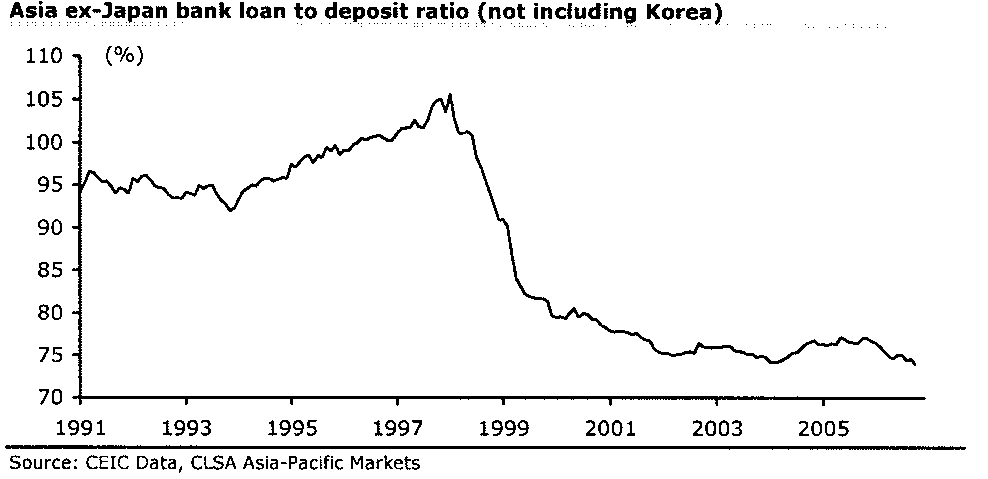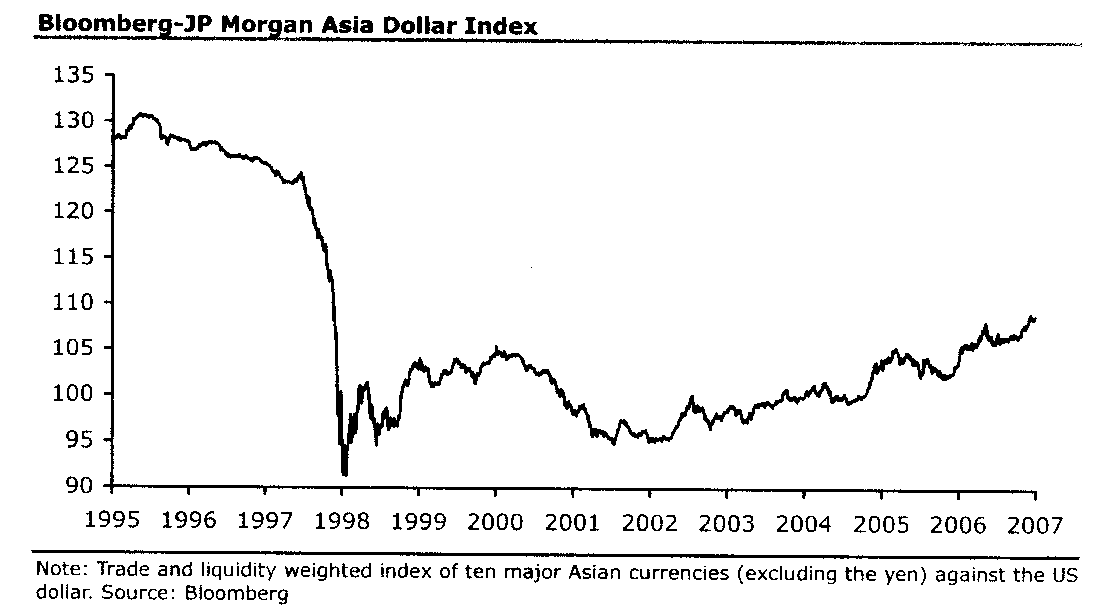Kuroto Fund, L.P. - Q4 2006 Letter
Dear Partners and Friends,
Kuroto Eight Years after Inception: Has the Asian Ascent Run Its Course?
Kuroto Fund has just concluded its eighth full year as an Asia-specific investment partnership. Looking back at Kuroto’s history of 30% annual compounded net returns (eight times our partners’ initial investment in eight years), it is clear that our timing in launching the fund was auspicious. We are particularly proud of our out-performance versus the broad Asian stock market benchmarks that have only compounded at 8.4% annually over the same eight year period.
Despite our fund’s performance, Kuroto’s stocks, trading at just ten times this year’s look-through earnings, are still not expensive. This modest multiple makes clear that our fund’s superior returns have principally been a function of our companies’ earnings progress as opposed to a simple multiple expansion, a point which validates our original strategy of focusing on superior businesses and managements. Such companies, in the ebullient Asian economic context, have provided a powerful engine of investment growth.
In light of Kuroto Fund’s abnormally high historic returns, we are constantly checking to make sure that Asian markets have not yet become the location of an extended speculative wave that is overdue for an outflow. And, while there is certainly evidence of some meaningful speculation in Asian equities, we are cautious in the short-run as opposed to outright bearish. We take great comfort in the fact that unlike the American situation, Asia’s growth, with a few exceptions, has not depended upon a massive expansion in debt. In other words, while we are seriously concerned about China’s banking system and India’s overheating, we are still comfortable with the Asian business environment in which our undervalued, superior companies operate.
Asia has not yet levered up…
and, Asian currencies are just beginning to appreciate.
In expressing continued confidence in our holdings, we are not suggesting that they cannot take a serious hit if global stock markets decline further. We do, however, suspect that a meaningful decoupling of Asia and the US is not that far away:
“If the world remains benign, Asia and other emerging markets will continue to outperform the S & P 500. If it does not, the epicenter of the problems will be in the US. Growth scares or worse in America will ultimately fuel this (Asian) bull story since the consequence is likely to be a weaker dollar and lower interest rates, both of which tend further to encourage asset reflation in Asia.” (Chris Wood, Greed and fear 3/15 pp1-2)
Confidence
For years, markets have blithely shrugged off the economy’s ever growing imbalances. You’ve posted an almost eight percent current account deficit and received a corresponding warning from the IMF? Not to worry markets say. Your economy is dependent on massive foreign capital inflows, rapidly rising debt, inflated real-estate prices and a currency propped up by central bank intervention? Your country’s economic strength is the greatest story never told markets say. --That the preceding paragraph could refer to either America circa 2006 or Thailand circa 1996 concerns us greatly.
Confidence, in and of itself, is oft cited as a virtue by market commentators. But, in the long-run, unwarranted confidence in a financial system lacking solid fundamentals is apt to cause more harm than good. Pre-crisis Thailand certainly did not want for confidence. The problem lay with underlying financial reality. Even after massive capital outflows had unmoored the Baht, it took several months for the markets to fully close the gap between reality and perception that had opened up in preceding years. In fact, when the Thai Baht broke on July 2, 1997 many observers reassured investors that the problems would be “contained,” not foreseeing that once the heavily leveraged Thai economy began to slow the resulting financial distress would feed on itself rather quickly.
When the tech bubble burst seven years ago, we thought a serious reexamination of the US economy’s shortcomings was inevitable. The unthinking confidence of the late 1990’s could not survive an eighty percent decline in tech stocks, could it? As to whether reason or pessimism would replace the hype, we were uncertain. But, we were positive that markets would start asking the hard but important questions again, e.g. how safe is the US dollar given America’s large and persistent twin deficits? Needless to say, our analysis was wrong. Greenspan worked his magic and sparked a debt fuelled housing bull market to pick up the economic slack created by the tech bust, and the US economy skated through a potential crisis without suffering so much as an official recession.
Today, once again, a bubble that has been fueling the US economy is deflating and, once again, overconfident investors are struggling to reconcile a barrage of unwelcome facts with their optimistic worldviews. For those market participants guided by nothing more than recent history, the current problems in the American mortgage market must seem like just another one of those periodic gut-checks that separate the weak from the truly deserving. After a “contained” correction, markets must continue on their upward trajectory. That is, after all, what always happens, right? Taking a slightly longer view of history, we are decidedly less sanguine.
With rating agency complicity, many of the ultimate owners of sub-prime mortgages have yet to mark their holdings to market and have thereby dampened the reverberations of the current down-turn. Should, however, the mortgage crisis worsen, as we believe is likely, the downgrades will come, and rising mortgage default rates will do serious damage to America’s highly geared financial system. Furthermore, given the size of the debt involved and the centrality of the mortgage boom to the US economy’s recent recovery, a mortgage crisis is highly unlikely to be “contained.” In fact the exact opposite is likely, that a mortgage crisis will raise fundamental questions about America’s long-term economic health. Should these questions dampen foreign appetite for US dollar denominated assets then the Fed’s hands will be tied, and financial reality will once again be more important than confidence. Kuroto Fund, with its concentrated holdings in companies generating revenue in undervalued Asian currencies is well positioned for the expiry of the Bernanke put and the decline of the US dollar.
Sincerely,
Sean Fieler
William W. Strong











